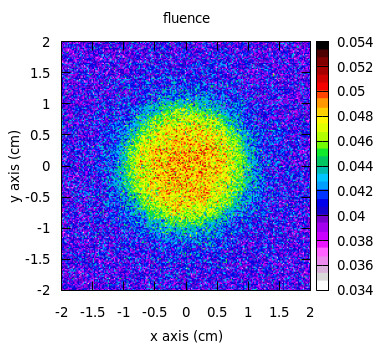Dear FLUKA Experts,
please excuse me if this is a silly question. Being aware that fluence is evaluated as the density of particle tracks, I am still not able to understand why the fluence of a homogenoeus beam becomes inhomogeneous in presence of regions with different densities, being higher in the region with higher density, even in setups for which I’d expect a homogeneous fluence scoring. For instance, consider the case of a 2 MeV electron beam which perpendicularly (along the z axis) impacts on the circular face of a copper cylinder, the transversal size of the beam beam larger than this face. Why is xy-fluence higher inside the central area even though the USRBIN detector is placed before the cylinder and does not include it? In the project of the example picture, a 5x5 cm2 flat beam starts from z = -1 cm, the copper cylinder of radius 1 cm is placed along z from z = 0 to z = 1 cm, and the xyz USRBIN is placed between z = -5 mm and z = -1 mm. I upload the project of this example setup.
I’m grateful for your help,
Enrico
fluence test.inp (1.2 KB)
fluence test.flair (3.2 KB)
